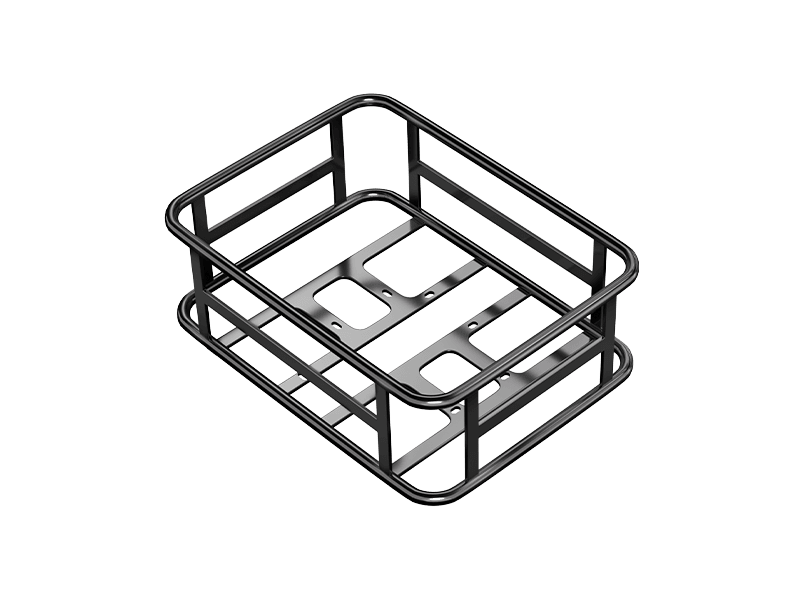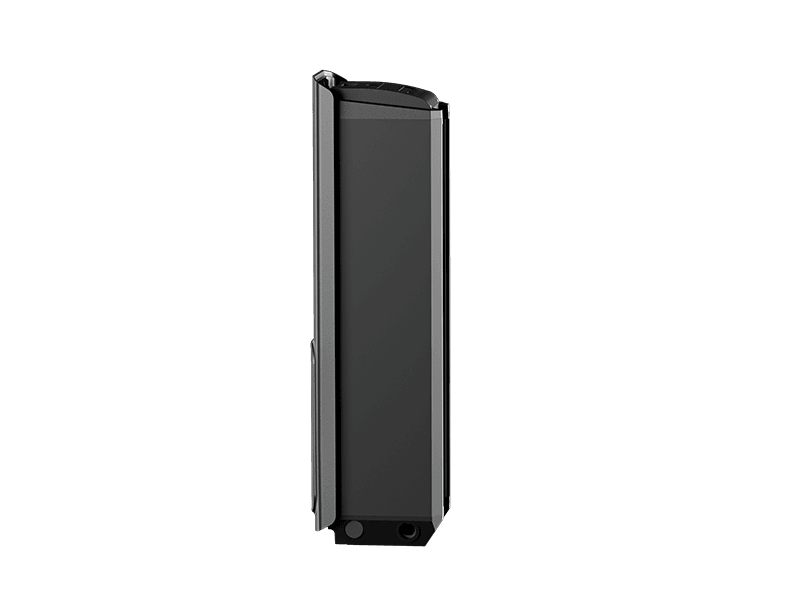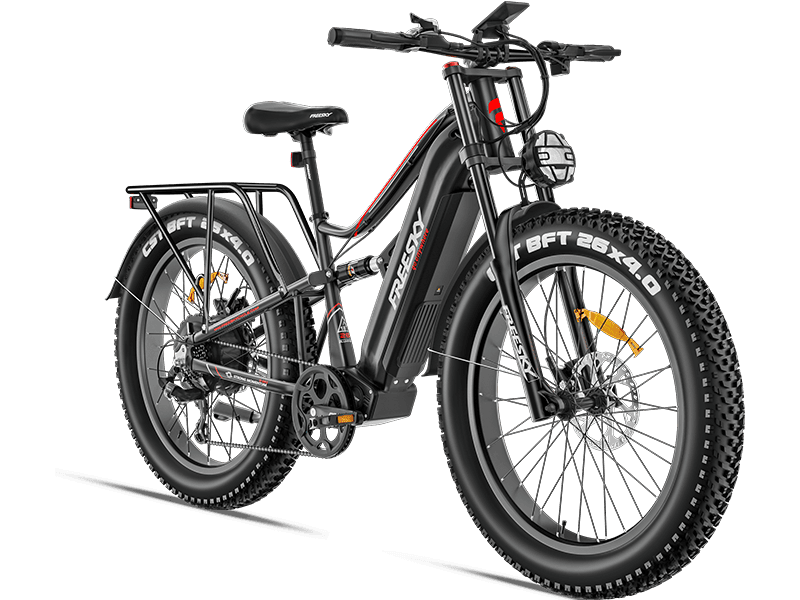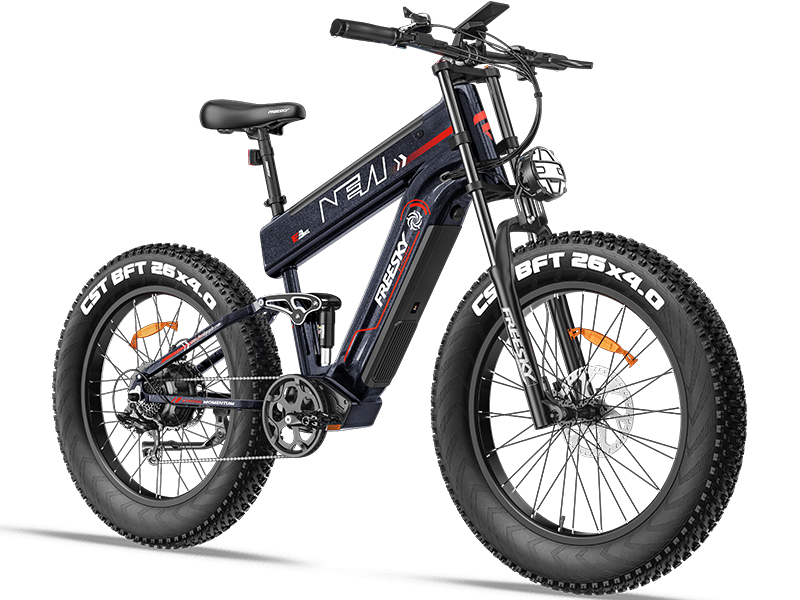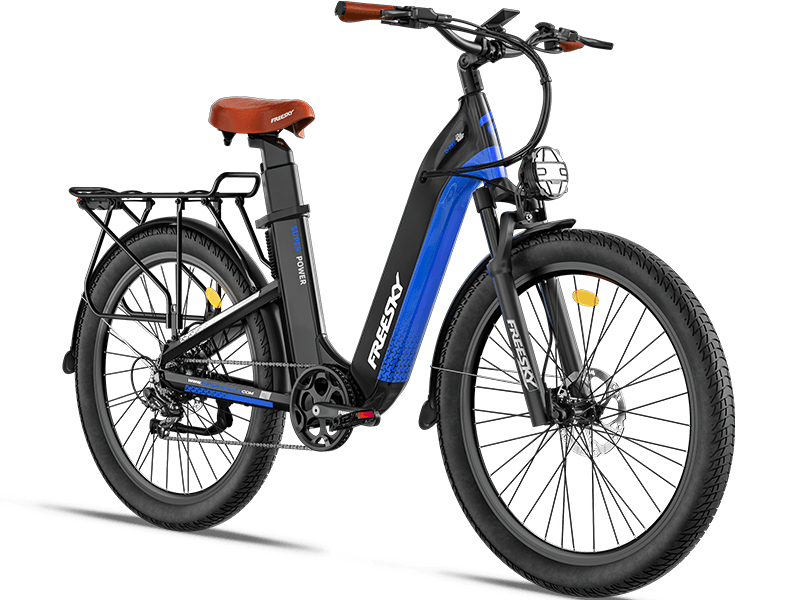Rider Stories
A collection of cyclists’ stories, each page etched with poems about the wind and freedom.
There's no item in your cart.
You May Also Like
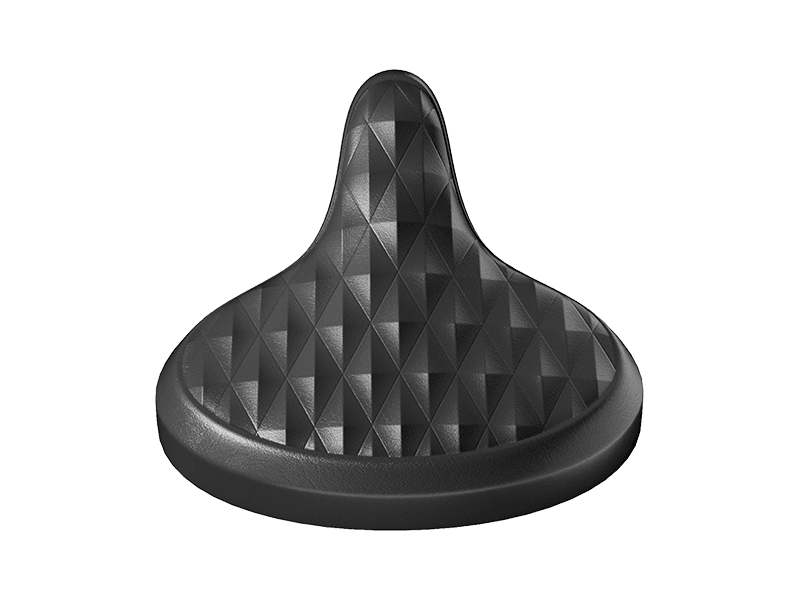
Oversized Comfortable Saddle
C$88.00
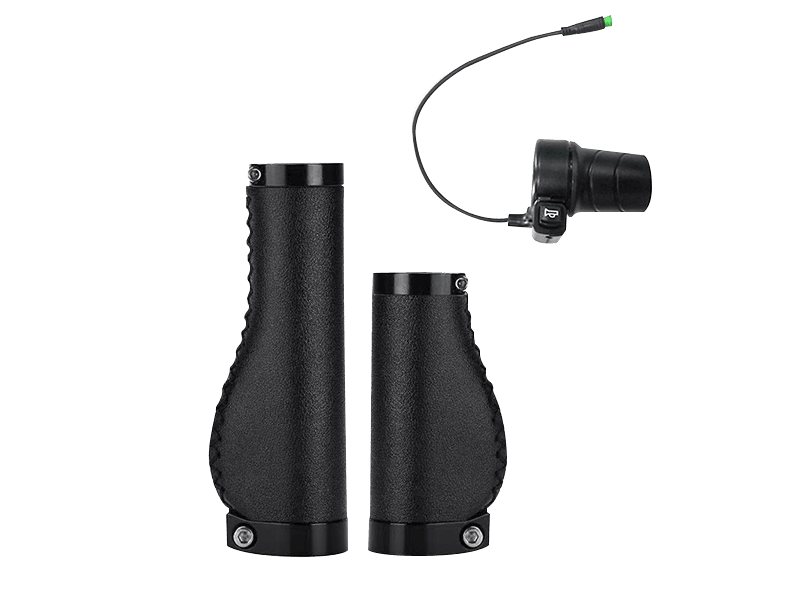
Twist Throttle with Grips (Right-Hand Only)
C$101.00 C$176.00
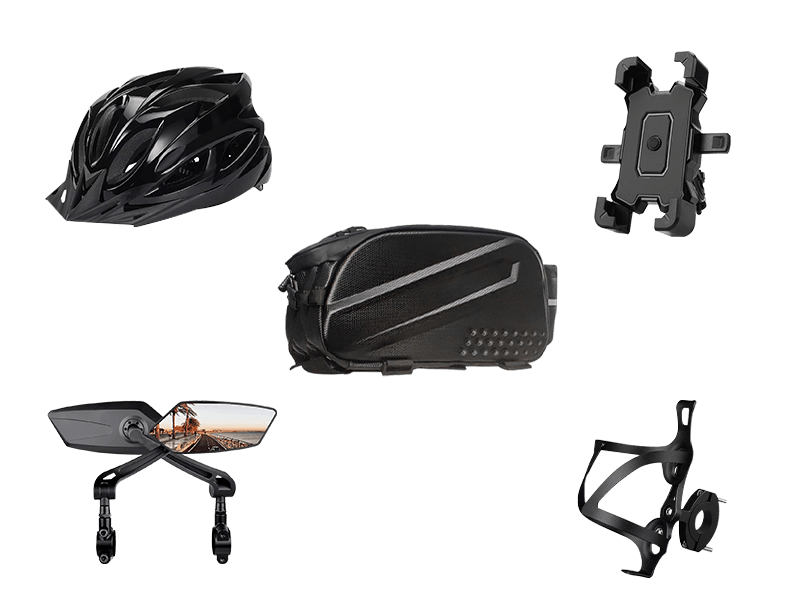
Cycling Package
C$118.00
Please enter a valid code.
Discount Applied
-C$0.00
Subtotal
C$0.00
You're Saving C$0.00
Shipping, taxes, and discount codes calculated at checkout.A collection of cyclists’ stories, each page etched with poems about the wind and freedom.
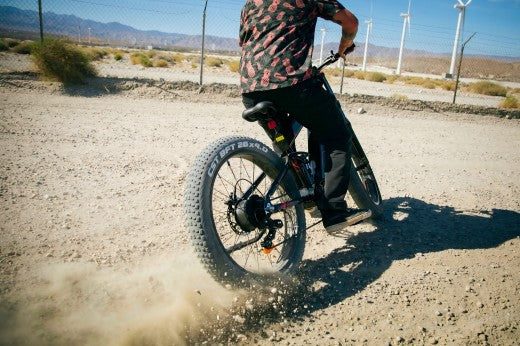
How to Maintain Your Ebike Chain for Optimal Performance
Sep 13, 2024
Electric bikes (ebikes) are a great choice for commuting, recreation, and eco-friendly travel. To keep them running smoothly and ensure their longevity, regular maintenance is essential. The chain is a critical part of the drivetrain, and keeping it clean and lubricated is key to maintaining a smooth ride and extending its lifespan. Here’s a detailed guide on how to properly maintain your ebike chain. 1. Clean the Chain Regularly Chains tend to gather dirt, dust, and debris, so regular cleaning is important. As a general rule, you should clean your chain every 100-200 kilometers (or sooner if you've been riding in wet or muddy conditions). Here's how to do it: Gather your tools: You’ll need a clean rag, an old toothbrush or a chain cleaning tool, and a bike-safe degreaser (avoid harsh chemical cleaners). Clean the chain: Shift your bike into the lowest gear and gently scrub the chain using the brush or chain cleaning tool to remove dirt and grime. For tougher grease buildup, apply some degreaser. Dry the chain: Use a clean cloth to thoroughly dry the chain to prevent rust. 2. Properly Lubricate the Chain After cleaning the chain, it’s important to lubricate it to reduce friction and wear. Here’s how to lubricate your chain effectively: Choose the right lubricant: Depending on the environment you ride in, select the appropriate lube. Use a wet lubricant for rainy or muddy conditions and a dry lube for dry, dusty environments. Apply the lubricant: Drip lubricant onto each link of the chain evenly. Turn the pedals slowly to distribute the lubricant throughout the chain. Be careful not to apply too much; excessive lube can attract dirt. Wipe off the excess: After the lubricant has spread across the chain, use a clean cloth to wipe away any excess to avoid a buildup of grime. 3. Check for Chain Wear Regularly Chains stretch and wear over time, which can affect your ebike’s performance. Every 1000-2000 kilometers, it’s a good idea to check for chain wear to know if it needs replacing: Use a chain wear tool: Insert the tool into the chain to measure its wear. If it shows that the chain has stretched beyond its limit, it's time to replace it. A worn-out chain can damage other components of the drivetrain. 4. Maintain Proper Chain Tension The chain should have the right amount of tension—not too tight, not too loose. A chain that's too tight can cause excessive friction and wear, while a chain that's too loose may fall off during a ride. Adjust the rear wheel position or derailleur as necessary to maintain the correct tension. 5. Special Care in Harsh Weather Conditions Riding in wet or muddy conditions makes your chain more susceptible to corrosion or clogging. After riding in the rain or snow, it’s important to clean and re-lubricate your chain to prevent rust. Conclusion By regularly cleaning, lubricating, and inspecting your ebike’s chain, you’ll not only extend its lifespan but also enhance your riding experience. Spending just a few minutes after each ride maintaining the chain will ensure your ebike remains in top shape and avoid costly repairs down the line. Remember, proper chain care is key to keeping your ebike performing at its best!
Read More
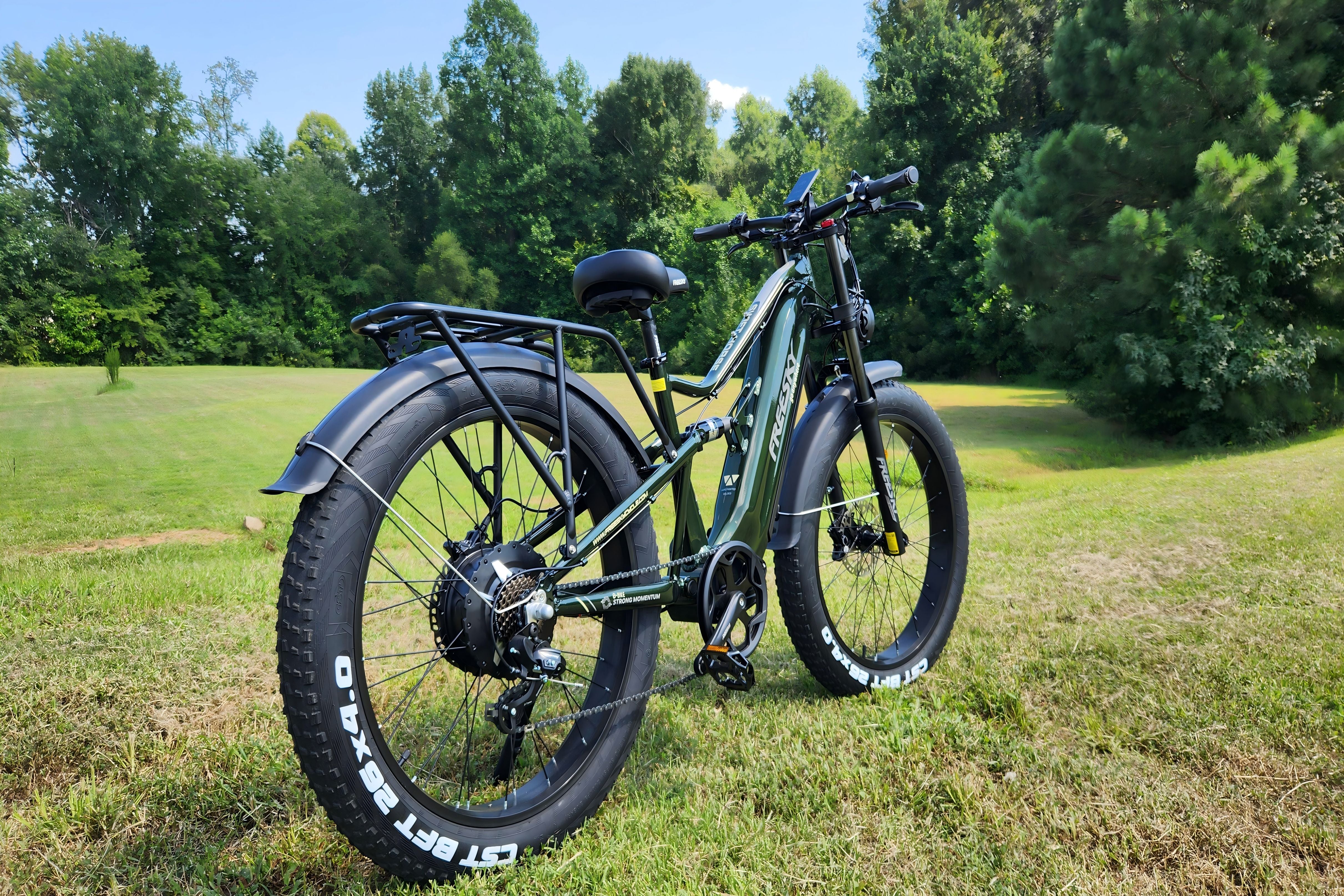
Avoid Costly Replacements: How Long Do Ebike Brake Pads Really Last?
Sep 06, 2024
When it comes to electric bikes, one of the key components that require regular attention is the brake system. Unlike traditional bikes, ebikes are often heavier and faster, which puts more strain on their brake pads. So, how long do ebike brake pads last? The answer depends on various factors, including the type of brake system, riding habits, and maintenance. We'll explore the different aspects that affect the longevity of ebike brake pads and offer tips for extending their lifespan. Factors That Affect Brake Pad Lifespan Type of Brakes: Mechanical vs. Hydraulic Ebikes typically use one of two types of brakes: mechanical disc brakes or hydraulic disc brakes. Mechanical disc brakes rely on cable tension to operate, while hydraulic brakes use fluid pressure for smoother and more consistent braking. Hydraulic brakes are generally more efficient, causing less wear on the brake pads. However, both systems will eventually require pad replacement based on how frequently and aggressively you brake. Riding Conditions Terrain plays a huge role in how long your brake pads last. Riding on flat, smooth roads won’t wear out your brake pads as quickly as riding on steep hills or off-road trails. If you’re frequently braking while going downhill or stopping suddenly in traffic, expect your brake pads to wear out faster. Weight and Speed of the Ebike Ebikes are generally heavier than regular bicycles, and the motor allows for higher speeds. This added weight and speed put more stress on the brakes, which leads to faster wear on the brake pads. Additionally, if you often ride with extra cargo or a passenger, this can further accelerate wear. Frequency of Use If you're an everyday commuter or regularly use your ebike for long-distance rides, your brake pads will naturally wear out faster than if you're a casual weekend rider. High mileage over time leads to more frequent pad replacements. Brake Pad Material The material of your brake pads can also influence how long they last. Organic brake pads are softer and quieter but wear out quicker, while sintered (metallic) pads are more durable but can be noisier and harsher on your brake rotors. Choosing the right brake pad material for your riding style is key to maximizing their lifespan. How Long Do Ebike Brake Pads Typically Last? On average, ebike brake pads last between 500 to 1,500 miles (800 to 2,400 kilometers). However, this range can vary significantly based on the factors mentioned earlier. Casual riders who stick to flat, smooth roads may see their brake pads last closer to 1,500 miles, while aggressive riders or those who frequently tackle hills may need replacements after 500 miles or less. Signs Your Ebike Brake Pads Need Replacing Squeaking or Squealing: Unusual noises when you brake can be a sign that your pads are wearing thin. Reduced Braking Power: If it takes longer to stop, or your brakes feel less responsive, it’s time to check the pads. Visual Inspection: Many ebike brake pads come with a wear indicator. If you see that the pads are less than 3mm thick, it’s time for a replacement. Brake Dust Buildup: Excessive brake dust around your wheels can indicate that your pads are degrading faster than normal. How to Extend the Life of Your Ebike Brake Pads Proper Braking Technique Avoid sudden, hard braking whenever possible. Instead, brake gently and gradually to reduce strain on the brake pads. By practicing smooth braking, you can extend the life of your pads and reduce wear on the rest of your braking system. Regular Maintenance Keeping your ebike’s brakes in good condition can prolong the life of the pads. Check your brake fluid levels (if using hydraulic brakes), clean the brake rotors regularly, and ensure that the calipers are correctly aligned. Invest in High-Quality Pads While organic pads may be quieter and offer a softer feel, investing in more durable materials like sintered brake pads can significantly increase their lifespan, especially if you ride in tough conditions. Brake Pad Rotation In some cases, you can rotate the front and rear brake pads to even out wear, especially since the rear brake typically experiences less wear than the front. This tactic can buy you more time before needing a full replacement. Ebike brake pads are one of the most critical safety components on your bike, and keeping them in top condition should be a priority. While brake pad lifespan varies based on factors like riding conditions, weight, and the type of brakes you use, following proper braking techniques and regular maintenance can help you maximize their lifespan. By being proactive and monitoring signs like squeaking or reduced braking power, you’ll know when it’s time for a brake pad replacement. After all, investing in good-quality pads and taking care of them not only saves money in the long run but ensures you have a safer, more reliable ride.
Read More
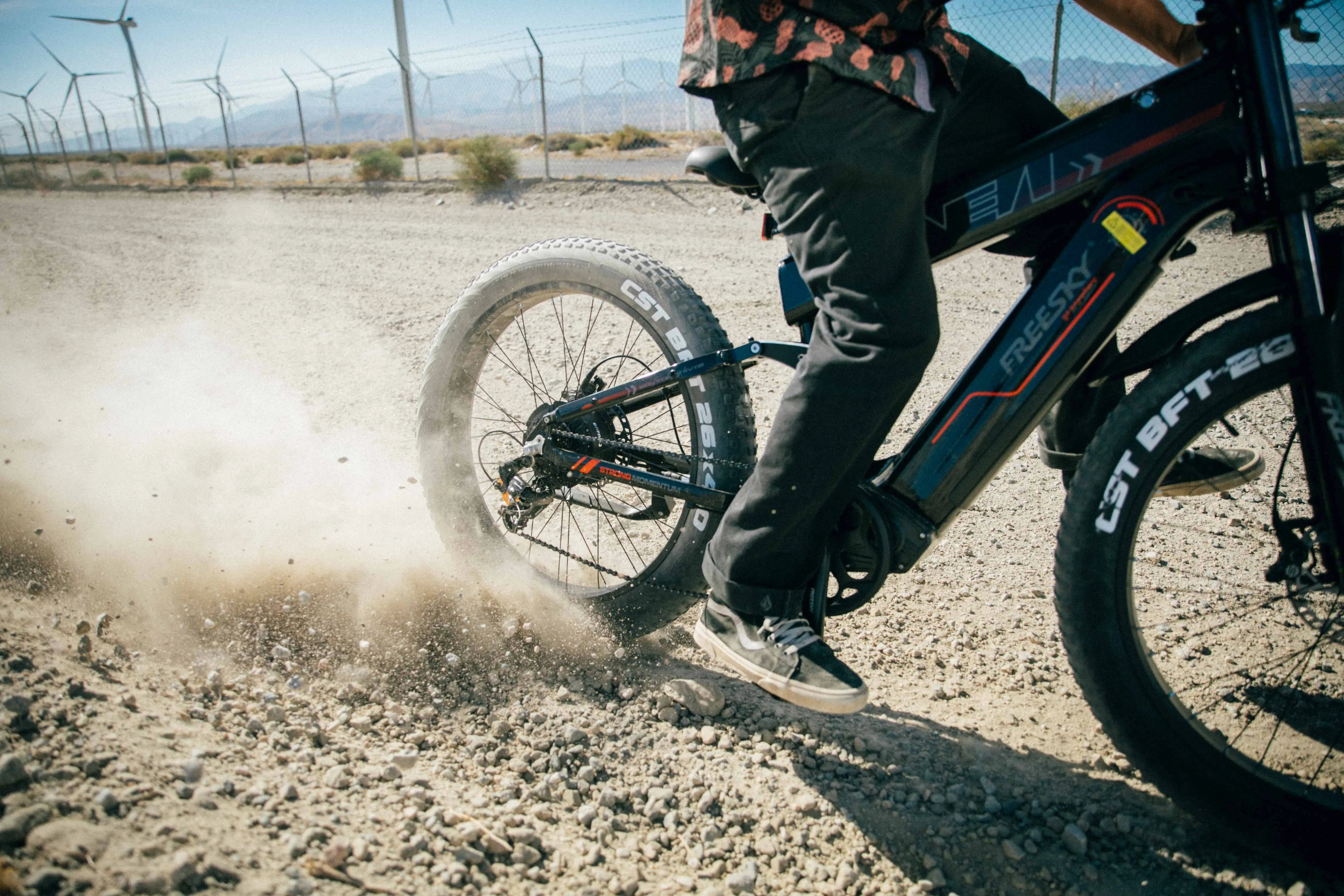
How to Repair an Electric Bike Controller: A Step-by-Step Guide
Aug 30, 2024
The controller is the brain of your electric bike, managing motor performance, speed, and overall operation. If your e-bike is malfunctioning, the controller could be the culprit. In this post, we’ll guide you through diagnosing and repairing your electric bike controller to keep your ride smooth and problem-free. 1. Preparing for the Repair Tools and Materials: Before you start, gather the necessary tools and materials: Screwdriver set Multimeter Soldering iron and solder Wire strippers Heat shrink tubing Electrical tape Safety Precautions: Always disconnect the battery before performing any electrical work to avoid shocks or short circuits. Wear protective gloves and work in a well-lit, ventilated area. 2. Diagnosing the Problem Check for External Damage: Start by inspecting the controller's exterior for any obvious damage, such as burnt spots, broken wires, or loose connectors. These are often easy to spot and fix. Test the Voltage with a Multimeter: If no external damage is visible, use a multimeter to measure the input voltage of the controller. Ensure the voltage is within the normal range. If it’s not, the problem might lie with the battery or connectors. Inspect Internal Components: If the exterior and voltage check out, you’ll need to open the controller and inspect the internal components like capacitors, resistors, and other elements for signs of damage or burning. 3. Repairing the Controller Replace Damaged Wires or Connectors: If you find broken or loose wires, use wire strippers to prepare the ends, solder them back together, and protect the connection with heat shrink tubing or electrical tape. Replace Damaged Components: If you discover burnt capacitors or other damaged components, replace them with parts of the same specifications. Be careful when soldering to avoid damaging other components. Reset the Controller: If there’s no apparent hardware issue, try resetting the controller. Some controllers have a reset button, while others might require disconnecting and reconnecting the power. After resetting, test if the controller functions properly. 4. Testing and Reinstallation Test the Repair: Before reinstalling the controller, test it to ensure all issues have been resolved. Reconnect the battery and check if the controller properly manages the motor and other functions. Reinstall the Controller: If everything works as expected, reinstall the controller on your bike, ensuring all screws and connectors are securely fastened. 5. Preventing Future Issues Regular Maintenance: To avoid future issues, regularly check the condition of the controller and other electrical components. Look for signs of wear or loose connections. Waterproofing: Controllers are susceptible to moisture, so if you often ride in wet conditions, consider using waterproofing measures to protect the controller. Conclusion By following these steps, you should be able to resolve most issues with your electric bike controller yourself. If you encounter more complex problems that you can’t fix, it’s best to consult a professional. Remember, safety first—always ensure the power is off before working on any electrical components. Share Your Experience If you have other tips or experiences with repairing electric bike controllers, share them in the comments below. Let’s keep our rides smooth and safe!
Read More
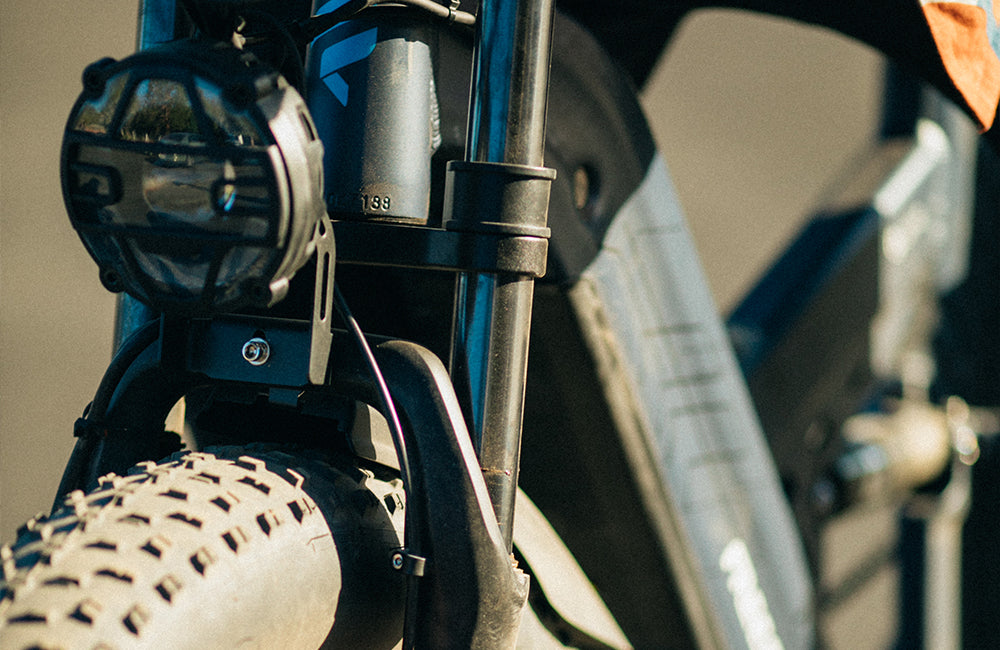
Gear Up Your eBike: Essential Accessories for an Enhanced Ride
Aug 27, 2024
As eBikes continue to revolutionize the way we commute and explore, ensuring your ride is equipped with the right accessories can make all the difference. Whether you're a daily commuter, weekend adventurer, or just enjoy a leisurely ride, gearing up your eBike with the right tools and enhancements can elevate your experience. Let’s dive into some must-have accessories that will make your eBike journey safer, more comfortable, and even more enjoyable. Safety First: Helmets and Lights Your safety on the road is paramount, and a good helmet is the first line of defense. Look for a helmet that not only fits well but also includes features like integrated lights or reflective materials. Speaking of lights, investing in bright front and rear lights is essential, especially if you ride in low-light conditions. LED lights with multiple modes can significantly improve your visibility to others on the road. Boost Your Comfort: Saddles and Grips Long rides can take a toll on your body, so why not upgrade your saddle and grips for added comfort? A well-cushioned, ergonomic saddle can reduce pressure on your lower back and sit bones, while gel-padded or ergonomic grips can help prevent numbness and hand fatigue. These small changes can make a big difference in your overall riding experience. Stay Connected: Phone Mounts and GPS In today’s digital age, staying connected while on the move is a necessity. A sturdy phone mount allows you to keep your device within reach, perfect for navigation or hands-free calls. Pair it with a reliable GPS system or app to ensure you never lose your way, no matter where your ride takes you. Carry It All: Baskets and Panniers Whether you're heading to the grocery store or embarking on a multi-day adventure, having ample storage is key. Front and rear baskets provide easy access to essentials, while panniers offer more space for larger items. Look for waterproof options to protect your belongings from unexpected weather changes. Keep It Secure: Locks and Alarms An eBike is a significant investment, so protecting it should be a top priority. A sturdy lock, such as a U-lock or chain lock, is essential for deterring theft. For added security, consider an alarm system that alerts you to any unauthorized movement. Some modern locks even come with GPS tracking, offering peace of mind when you park your eBike in public spaces. Optimize Performance: Tire Upgrades and Suspension For those looking to take their eBike off the beaten path, upgrading your tires and suspension can vastly improve your ride. All-terrain tires provide better grip and durability on rough surfaces, while a quality suspension system can absorb shocks and make for a smoother ride. These upgrades are particularly beneficial if you frequently tackle uneven or challenging terrain. Stay Energized: Extra Batteries and Chargers One of the biggest concerns for eBike riders is battery life. If you plan on taking long rides or are just someone who prefers extra assurance, investing in an additional battery or a portable charger is a smart move. Many eBikes now offer quick-swap battery systems, making it easier than ever to extend your ride time without worrying about running out of juice. Make it Your Own: Custom Decals and Accessories Lastly, don’t forget to add a personal touch to your eBike. Custom decals, colorful handlebar grips, or even a quirky bell can make your ride truly yours. These small details can bring joy to your rides and make your eBike stand out in the crowd. Conclusion Gearing up your eBike with the right accessories can turn an ordinary ride into an extraordinary experience. From safety essentials to comfort upgrades and performance boosters, the right gear can enhance every aspect of your journey. So, before your next ride, take some time to assess what you might need to make your eBike truly unstoppable. Ready to gear up? Explore our full range of eBike accessories and start enhancing your ride today!
Read More
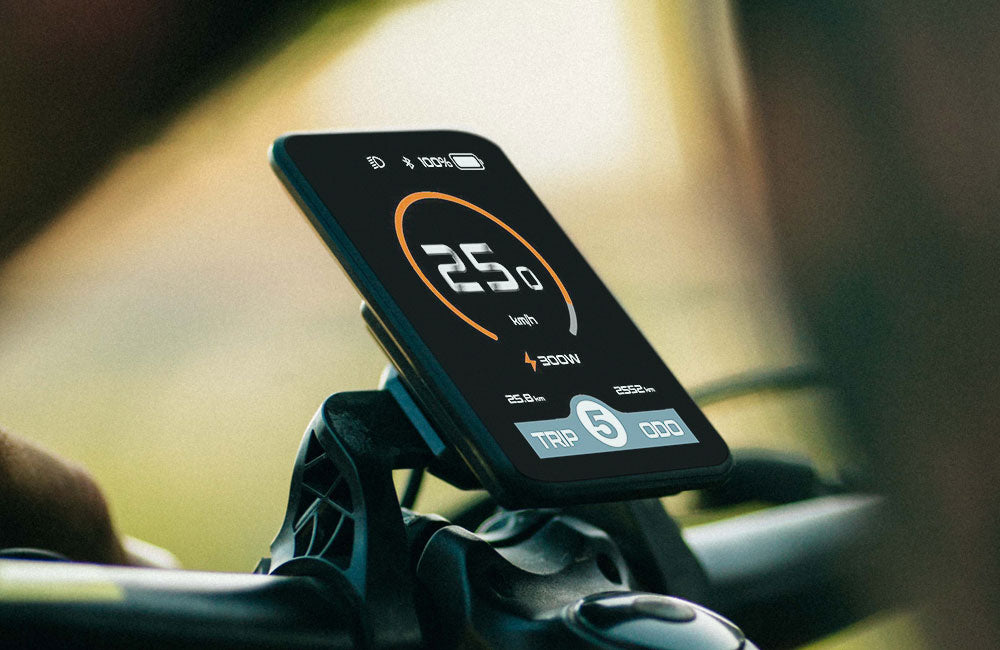
Start Your Electric Bike Without a Key: NFC Unlocking Made Easy
Aug 22, 2024
In the world of electric bikes, convenience and innovation go hand in hand. The Warrior eBike stands as a testament to this, offering riders not just a powerful and rugged ride, but also cutting-edge technology that makes your life easier. One of the standout features of the Freesky ebike is its NFC (Near Field Communication) unlocking capability, allowing you to start your bike without the hassle of a physical key. Let’s dive into how this feature works and why it’s a game-changer for eBike enthusiasts. What is NFC and How Does It Work? NFC technology allows devices to communicate wirelessly when they are close to each other, typically within a few centimeters. It’s the same technology used in contactless payment systems like Apple Pay or Google Wallet. In the case of the Warrior eBike, the NFC function is integrated into the bike's dashboard, enabling a seamless and secure way to unlock and start your bike. The Freedom of Keyless Riding Imagine this: You’re ready to hit the road, but instead of fumbling through your pockets or bag for a key, you simply tap your NFC-enabled device, like a smartphone or a card, on the bike's dashboard. In an instant, the Warrior eBike powers up, and you’re ready to ride. This keyless start feature not only saves you time but also adds an extra layer of security—only devices with the correct NFC chip can unlock the bike. Why Choose the Warrior eBike? The Warrior eBike isn't just about convenience. It's a powerful machine designed for those who seek adventure and reliability. With its robust build, high-torque motor, and long-lasting battery, the Warrior is ready to take on any challenge. Whether you’re commuting through the city or exploring off-road trails, the Warrior delivers an exceptional riding experience. The addition of NFC unlocking is the icing on the cake. It reflects the bike's commitment to blending technology with performance, ensuring that every ride is not just enjoyable but also effortless. Plus, you’ll never have to worry about losing your keys again. How to Set Up NFC Unlocking on Your eBike Getting started with the NFC unlocking feature on your eBike is straightforward: Activate NFC on Your Device: Ensure that your smartphone or NFC-enabled card is ready to use. Most modern smartphones come with built-in NFC functionality. Pair Your Device with the Bike: Follow the easy instructions provided in the Warrior eBike manual to pair your NFC device with the bike’s dashboard. This usually involves placing the device near the NFC reader and confirming the pairing. Unlock and Ride: Once paired, you can start your bike anytime by simply tapping your device on the dashboard. It’s that easy! The Freesky ebike eBike is a perfect blend of power, durability, and smart technology. The NFC unlocking feature is just one of the many reasons why this bike stands out in the crowded electric bike market. It offers riders the freedom of keyless riding, enhancing the overall experience and making every journey more enjoyable. If you’re looking for an eBike that’s not just about getting from point A to point B but also about embracing the future of riding, Freesky ebike is your go-to choice. Ready to experience the future of eBiking? Hop on a Freesky ebike and ride key-free into your next adventure!
Read More
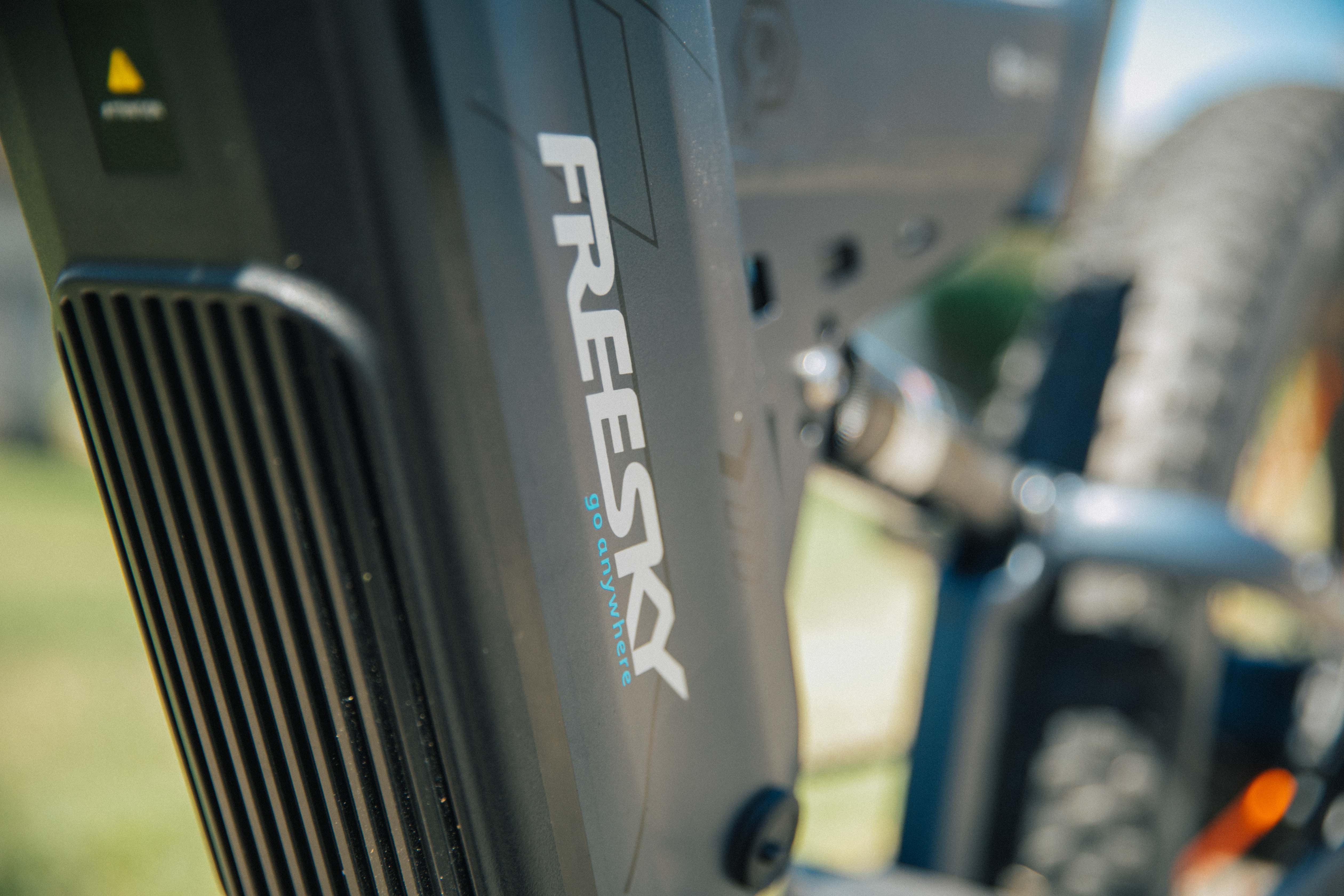
How to Extend the Life of an Electric Bike Battery?
Aug 18, 2024
Electric bikes (eBikes) have become an increasingly popular mode of transportation, offering an eco-friendly and cost-effective way to travel. One of the most critical components of an eBike is its battery. Proper maintenance and care can significantly extend the life of your eBike battery, ensuring you get the most out of your investment. In this blog post, we will explore practical tips to help you extend the life of your eBike battery. 1. Understand Your Battery Type The first step in extending your eBike battery's life is understanding the type of battery you have. Most eBikes use lithium-ion (Li-ion) batteries, known for their high energy density and long life. However, each battery type has its own characteristics, and knowing them will help you care for it properly. 2. Avoid Extreme Temperatures Temperature plays a crucial role in the performance and longevity of your eBike battery. Batteries operate best at moderate temperatures, typically between 20°C and 25°C (68°F to 77°F). Exposure to extreme cold or heat can degrade the battery’s performance. In winter, try to store your eBike indoors to avoid freezing temperatures, and in summer, avoid leaving it in direct sunlight. 3. Charge Smartly Charging habits significantly impact battery life. Here are a few tips: Avoid full discharges: Regularly discharging your battery completely can shorten its lifespan. Try to recharge your battery before it drops below 20%. Don’t overcharge: Once your battery reaches 100%, unplug it to prevent overcharging. Some eBikes have smart chargers that automatically stop charging when full, which is ideal. Partial charges are fine: Unlike older battery types, Li-ion batteries don’t have a memory effect, so you can charge them at any time without worrying about reducing capacity. 4. Regular Maintenance Regular maintenance of your eBike ensures all components, including the battery, are in top condition. Clean the battery contacts periodically with a dry cloth to remove dust and debris. Ensure that the battery is securely attached to the bike to prevent vibrations that could damage it. 5. Store Properly When Not in Use If you plan to store your eBike for an extended period, take these precautions: Charge to around 50%: Storing a fully charged or completely drained battery can harm its lifespan. A 50% charge is ideal for long-term storage. Store in a cool, dry place: Keep the battery in a location where it won’t be exposed to extreme temperatures or humidity. Check periodically: If you’re storing the battery for months, check the charge level every few weeks and top it up to 50% if necessary. 6. Use the Right Charger Always use the charger that came with your eBike or one recommended by the manufacturer. Using a different charger can result in incorrect voltage or current, potentially damaging the battery. 7. Minimize High Power Drains Frequent use of high power modes, such as turbo or sport, can drain your battery quickly and reduce its lifespan. Try to use eco or normal modes for most of your rides and reserve high power modes for when you really need them. 8. Plan Your Rides Planning your rides can help you manage your battery’s life more effectively. Knowing the distance and terrain will allow you to choose the appropriate power mode, helping you conserve battery power and avoid unnecessary drains. 9. Consider a Battery Management System (BMS) A Battery Management System (BMS) is designed to monitor and manage the battery's condition, balancing the charge between cells, preventing overcharging, and protecting against short circuits. If your eBike doesn’t have one, consider investing in a BMS to prolong battery life. Conclusion Taking care of your eBike battery is essential for extending its life and ensuring optimal performance. By following these tips, you can enjoy longer rides, fewer replacements, and a more sustainable eBiking experience. Regular maintenance, smart charging habits, and proper storage are key to getting the most out of your eBike battery.
Read More
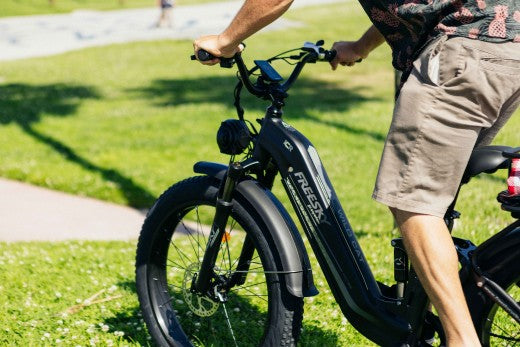
Rainy Day Rides: Protecting Your Electric Bike and Staying Safe
Aug 15, 2024
Riding an electric bike in the rain might seem daunting, but with the right precautions, it's perfectly manageable. Whether you're commuting to work or enjoying a weekend ride, understanding how rain affects your battery-assist bike can help you stay safe and protect your investment. The Resilience of Electric Bikes Modern electric bikes are designed with resilience in mind, especially when it comes to weather. Most electric bicycles, including those equipped with a hub motor, are built to withstand a fair amount of moisture. The components, such as the battery and motor, are typically well-sealed to prevent water ingress. However, while brief exposure to rain is usually fine, prolonged exposure or submerging your bike in water can cause damage. Protecting Your Battery Assist Bike The battery is the heart of your electric bike, and taking care of it is crucial, especially in wet conditions. When riding in the rain, it's important to make sure the battery is securely attached and that all connections are sealed. Some riders opt for additional protective covers for their batteries to prevent moisture from seeping in. After your ride, it's a good practice to dry the battery and other electrical components to avoid long-term damage. The Role of the Electric Bicycle Hub Motor The hub motor on an electric bicycle is another critical component that needs attention in wet weather. Like the battery, hub motors are generally well-sealed, but they aren't completely waterproof. Riding through puddles or in heavy rain can still pose risks. If you're planning to ride frequently in wet conditions, consider investing in a bike with a high IP rating for its motor, which indicates better protection against water and dust. High-Security Features for Peace of Mind Riding in the rain isn't just about protecting your bike from water—it's also about ensuring your safety. High-security features on your electric bike, such as reliable brakes, bright lights, and non-slip tires, are essential in wet conditions. Make sure your bike is equipped with these features to maintain control and visibility when the roads are slick. Post-Ride Care After riding in the rain, it's essential to take some time for post-ride care. Wipe down your bike, especially the battery and motor, to remove any moisture. Check for any signs of water damage, such as condensation inside the battery casing. Regular maintenance, like lubricating the chain and checking the brakes, will also help keep your bike in top condition for the next ride. So, can you ride an electric bike in the rain? Absolutely! With the right precautions and care, your battery assist bike can handle wet conditions just fine. Just remember to protect your electric bicycle's hub motor, maintain high-security features, and perform regular maintenance to ensure a smooth and safe ride, rain or shine.
Read More
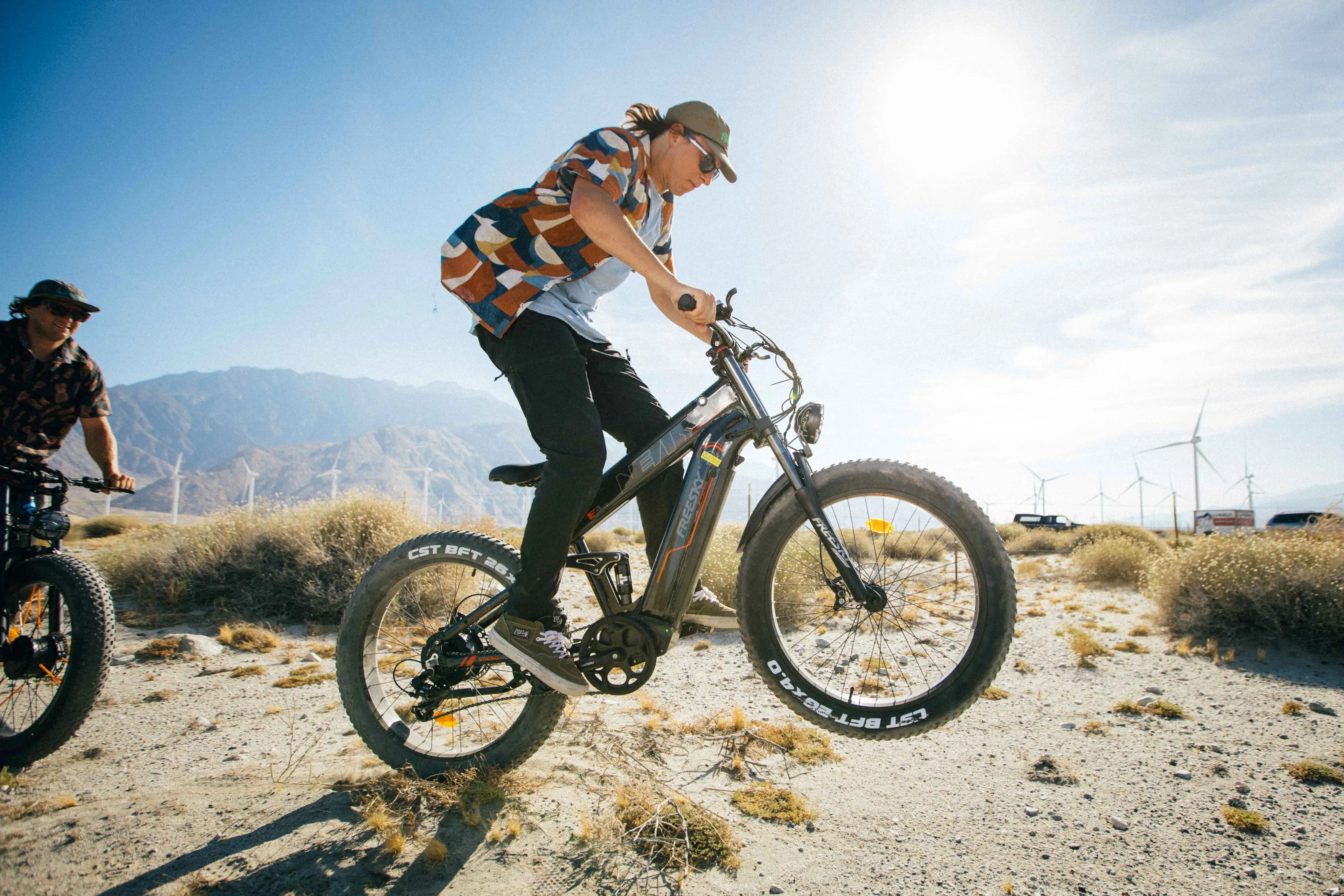
Electric Bike Revolution: Embracing the Unlimited Speed Controller
Aug 09, 2024
The electric bike (e-bike) market has witnessed exponential growth, driven by technological advancements and a push for sustainable transportation solutions. One of the most intriguing innovations in this sector is the unlimited speed controller. This component has captured the attention of enthusiasts and riders eager for an enhanced riding experience. What is an Unlimited Speed Controller? An unlimited speed controller is a sophisticated device designed to modify the speed limitations of an e-bike. Traditional e-bike controllers are programmed to cap speeds to comply with legal restrictions and safety standards. In contrast, an unlimited speed controller bypasses these restrictions, allowing riders to push their e-bikes beyond standard speed limits. Key Features: Customizable Speed Settings: Riders can adjust the maximum speed to match their preferences. Increased Power Output: Enables higher motor performance by removing speed caps. Versatility: Compatible with various e-bike models and motor types. Advantages of Unlimited Speed Controllers 1. Enhanced Performance For those seeking a high-speed thrill, an unlimited speed controller delivers a performance boost that traditional controllers cannot match. Riders can experience faster acceleration and higher top speeds, making for a more exciting and dynamic ride. Whether for daily commuting or recreational use, this enhancement opens up new possibilities for e-bike performance. 2. Tailored Riding Experience The ability to adjust speed settings allows riders to tailor their e-bike’s performance to their specific needs. From controlled, moderate speeds for casual rides to high-speed bursts for more intense adventures, the flexibility offered by unlimited speed controllers ensures a personalized riding experience. 3. Optimized Motor Efficiency These controllers can improve motor efficiency by providing more precise control over power delivery. This means better utilization of the motor's capabilities, which can translate into longer battery life and more efficient energy use during rides. Legal and Safety Considerations While the allure of unlimited speed is undeniable, it's crucial to navigate this feature with caution. Many regions have regulations governing e-bike speeds, and exceeding these limits can lead to legal consequences. Additionally, higher speeds increase the risk of accidents and injuries. Safety Tips: Protective Gear: Always wear helmets and other protective equipment to safeguard yourself at higher speeds. Local Regulations: Research and adhere to local laws regarding e-bike speed limits to avoid fines and ensure safety. Controlled Testing: If using an unlimited speed controller, test its capabilities in safe, controlled environments before venturing onto public roads. Looking Ahead: The Future of E-Bikes The unlimited speed controller is just one of many innovations shaping the future of e-bikes. As technology evolves, we can anticipate further advancements that will enhance performance, safety, and overall rider experience. Future developments may include smart controllers that adapt to environmental conditions or integrated systems that balance speed with energy efficiency. Conclusion The introduction of unlimited speed controllers marks a significant milestone in the evolution of electric bikes. While offering thrilling performance and customization options, it’s essential to approach this technology with a balanced perspective on safety and legal requirements. By responsibly embracing these innovations, riders can enjoy the full potential of their e-bikes while contributing to the ongoing advancement of electric mobility. As we ride into the future, the possibilities for e-bike technology are boundless. Embrace the excitement of enhanced performance and stay informed about the latest advancements to make the most of your electric bike journey.
Read More

Unlocking the Speed: Factors That Influence Your eBike’s Velocity
Aug 07, 2024
Electric bikes (eBikes) have revolutionized commuting and leisure cycling with their blend of pedal power and electric assistance. One of the key considerations for riders is the speed capabilities of these modern marvels. Several factors come into play when determining how fast an eBike can go: Motor Power: The heart of any eBike, motor power dictates how quickly you can accelerate and maintain speed. Higher wattage motors offer better performance, especially on hills and rough terrain. Battery Capacity: Think of it as the fuel tank of your eBike. A larger battery capacity means longer rides and sustained high speeds without needing a recharge. Weight Matters: Both the weight of the bike and the rider influence speed. Lighter eBikes accelerate faster and reach higher speeds more effortlessly than heavier models. Rider Input: Your own pedaling power contributes to how fast you can go, especially in pedal-assist modes. Stronger riders can utilize the eBike’s motor to reach higher speeds more efficiently. Tire Dynamics: The type of tires and their inflation levels affect rolling resistance. Low-resistance tires and proper inflation can significantly boost your eBike’s speed and efficiency. Environmental Conditions: From wind resistance to road terrain, external factors play a role. Smooth, flat roads with minimal wind resistance are ideal for achieving top speeds. Assistance Levels: Most eBikes offer multiple assistance levels, allowing you to adjust how much electric help you receive. Different modes affect both speed and battery consumption. Understanding these factors helps you choose the right eBike for your needs and optimize its performance for a thrilling ride every time. Whether you're commuting to work or exploring new trails, harnessing these elements ensures you get the most out of your eBike experience.
Read More


